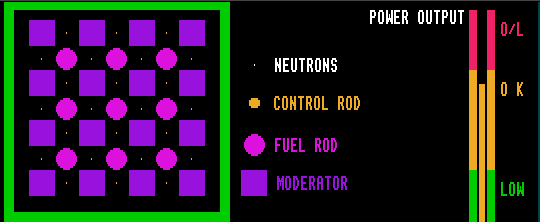
REACTOR CONTROL RODS
Within a nuclear reactor, slow neutrons induce the fission of fissile nuclides within the fuel rods comprising the core, producing yet more but much hotter (faster) neutrons. The fast neutrons are un-able to induce further fission of the fuel; they are simply travelling too fast for the nucleus of the fissile material to notice it suddenly has an extra neutron. So the fast neutrons are slown down by the moderator to become slow (thermal) neutrons, which are then able to induce the fission of more fissile matter in what is called a chain-reaction. This chain-reaction is un-stable, and liable to continue increasing exponentially until the core explodes. To limit the availability of slow neutrons, the number of fast neutrons must be regulated. This is accomplished by the insertion of control rods interspersed between the fuel rods. The control rods absorb fast neutrons, preventing too many of them being converted into slow neutrons by the moderator.
By actively moving the control rods up and down within the core, the nuclear reaction can be controlled and maintained at a steady rate, thus preventing nuclear run-away. In practice this arrangement would result in hot lower and cool upper core temperatures, so instead, a number of control rods are fully inserted within the core, sufficient to provide a neutron-gain just slightly above unity. Further fine control of the gain is afforded by another set, of height-adjustable, control rods. In an emergency, or for maintenance, all the control rods and more besides can be fully inserted within the core to bring the nuclear reaction to a trickle.
Usually, either boron or cadmium are used as the control rods, as these elements exhibit high absorption of fast neutrons.



![]()